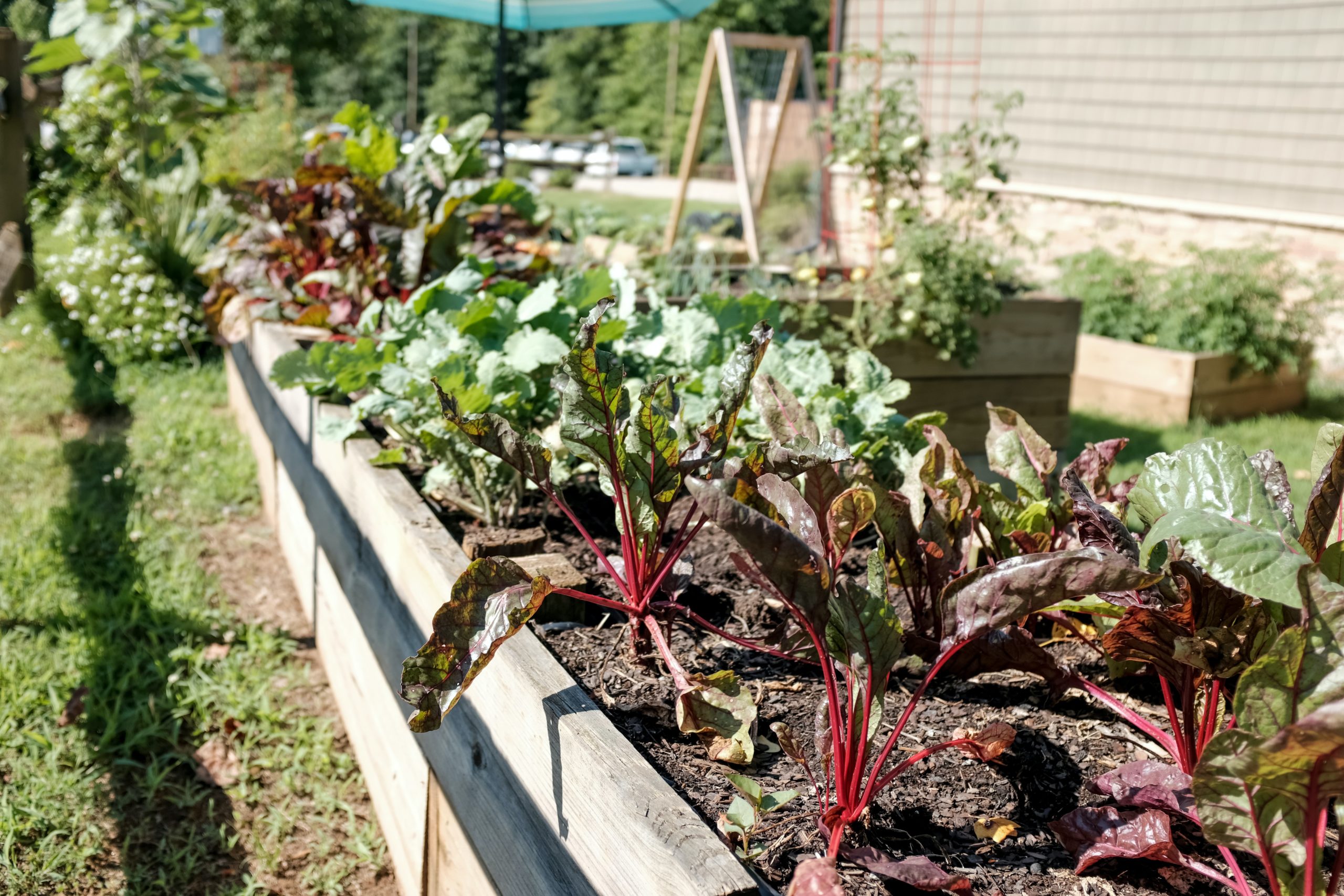Not to be confused with a garden full of mini Italian-style lasagna dishes (if only), a lasagna garden is also known as sheet mulching.
Sheet mulching is a method of creating a garden that mimics the decomposition of natural soil without actually digging into the soil itself. Sheet mulching—like a lasagna—consists of three layers:
- Cardboard base
- Water-absorbent materials
- Compost
The base layers choke out weeds, while the top layer allows for fertile soil for planting. Because a lasagna garden is its own mini-ecosystem, this method can be used to create a garden just about anywhere.
Always dreamed of a whimsical rooftop garden? This method is for you.
Have a backyard full of low-nutrient soil or teeming with weeds that you can’t quite get rid of? A lasagna garden is your answer.
Only have access to pavement? Yep, a lasagna garden works there, too.
Lasagna Gardening: The Good & the Bad
As with anything, there are pros and cons to the lasagna garden method.
PROS.
Low maintenance.
Lasagna gardening is one of the simplest gardening methods. No digging or tilling required. And pesky weeds seeming to poke their heads up each time you turn around? Not a thing with lasagna gardens—these block out weeds almost completely!
Cost effective.
Because a lasagna garden uses recyclable materials you already have at home, you don’t have to pay for materials like gardening soil. It also saves you a trip to the recycling center, as you’ll be able to use cardboard and newspaper directly in your lasagna garden. Wins for your wallet, and wins for the world!
Improves soil.
Live in an area with poor soil? A lasagna garden holds nutrients longer than if compost or fertilizer were added on top of an in-ground garden. Lasagna gardens are rich in microorganisms, hold water, slow evaporation and run-off, and keep root systems cool.
Plant when you want.
After building your lasagna garden, it can sit and “cook”—aka decompose—for a few months until you’re ready to plant. Or you can add a layer of compost on top and plant the garden immediately!
CONS.
Safety and carbon sources.
Some cardboard created overseas have dyes and petroleum products within the materials, which can leach as it breaks down into your soil. It’s best to use American-made cardboard, if possible. Do not use coated (water-resistant) materials. If there is glue, adhesive or labels on the boxes, cut that off so that only the cardboard remains. If possible, use boxes that were originally used for food. Happy box hunting!
Heavy layers reduce oxygen levels.
As the heavy bottom layers of the lasagna garden break down, soil oxygen levels are greatly reduced, because they are more or less suffocated by the layers. Aerobic bacteria cannot do their work efficiently in this environment.
Time.
While a lasagna garden is low-maintenance once it is set up, it does require an initial investment of time to gather and move all the organic material necessary for the carbon & nitrogen layering. It also takes time for the layers to break down and create the nutrient-rich environment that plants love.
Garden size.
Looking to cultivate an entire field? The lasagna garden is not your friend. This gardening method works best for smaller spaces, given the amount of materials it requires to create.
Pests.
While a lasagna garden will get rid of some pests (hooray!), it does encourage worms, slugs and snails. Worms are great, but not slugs and snails! Diatomaceous earth is one method of organically controlling slugs and snails.
How to create your lasagna garden.
Material Options:
(Note: You don’t need to have all materials on this list to create your lasagna garden. The important thing is having some materials for each layer!)
- Grass Clippings (dry and green)
- Leaves
- Fruit and Vegetable Scraps
- Coffee Grounds
- Tea leaves and tea bags
- Weeds (only if they haven’t gone to seed)
- Manure (for compost)
- Egg Shells (for compost)
- Shredded newspaper
- Junk mail
- Pine needles
- Spent blooms
- Garden trimmings
- Peat moss
- Cardboard
- Seaweed
Build your lasagna layers.
(Please note: Water each layer as you build. This encourages decomposition!)
Layer One: Cardboard and/or newspaper.
We recommend having a raised bed frame in place when creating your lasagna garden. Begin by placing a layer of cardboard and/or newspaper on top of the grass to choke out any weeds. If building on pavement or a rooftop, ensure your bed frame has a base.
Need extra cardboard? Ask retail establishments like grocery stores, liquor stores, or electronics stores if they have extra.
Layer Two: Water-absorbent materials.
Next up, layer water-absorbent materials 2 – 3 inches thick on top of the cardboard. Materials you can use include:
- Straw
- Dried grass clippings
- Mulch
- Bark
- Coffee grounds
Layer Three: Grass clippings or compost.
Time for our top layer of nutrient-rich organic materials to increase the productivity of your lasagna garden:
- Grass clippings
- Compost
Ensure this layer is 4 – 8 inches thick.
Garden frame not full enough?
Continue layering in the same 1 – 3 layer order until the garden has reached the top of your bed frame.
Watering your lasagna garden.
Lasagna gardens tend to retain moisture quite well, so you’ll need to monitor and adjust your watering as necessary.
RELATED READING:


